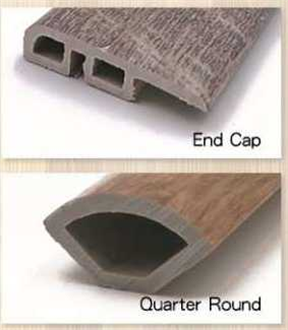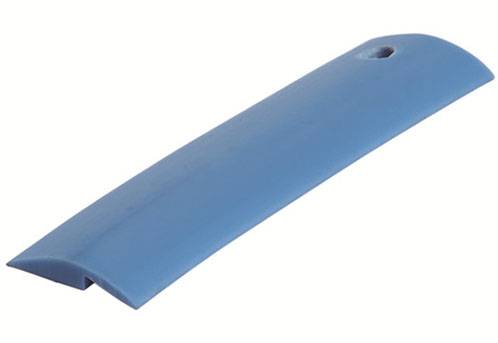The Forbes Home editorial team is independent and objective. To help support our reporting work, and to continue our ability to provide this content for free to our readers, we receive compensation from the companies that advertise on the Forbes Home site. This compensation comes from two main sources. First, we provide paid placements to advertisers to present their offers. The compensation we receive for those placements affects how and where advertisers’ offers appear on the site. This site does not include all companies or products available within the market. Second, we also include links to advertisers’ offers in some of our articles; these “affiliate links” may generate income for our site when you click on them. The compensation we receive from advertisers does not influence the recommendations or advice our editorial team provides in our articles or otherwise impact any of the editorial content on Forbes Home. While we work hard to provide accurate and up to date information that we think you will find relevant, Forbes Home does not and cannot guarantee that any information provided is complete and makes no representations or warranties in connection thereto, nor to the accuracy or applicability thereof.
Renovating a kitchen can be a complicated process. Unlike a bedroom or living room with few built-in components or complicated wiring outside of a TV or computer set-up, kitchens have a lot of considerations; appliances, plumbing, and electricity all have to come together to make the most of the space and ensure that it works safely. Homogeneous Vinyl

When considering a kitchen remodel, don’t forget your flooring. Flooring should account for approximately 7% of the remodeling budget if you’re tackling the whole kitchen. It needs to be done earlier in the process, too; painting your kitchen walls may come first, but flooring and cabinets need to come before the countertops, backsplash and appliances. While you may be able to DIY some of these, it’s always a good idea to bring in a professional flooring installation company to ensure the job is done perfectly. Pros and cons of some of the most common and best flooring options for kitchens are below. Advertisement THIS IS AN ADVERTISEMENT AND NOT EDITORIAL CONTENT. Please note that we do receive compensation for any products you buy or sign up to via this advertisement, and that compensation impacts the ranking and placement of any offers listed herein. We do not present information about every offer available. The information and savings numbers depicted above are for demonstration purposes only, and your results may vary. Compare Quotes From Top-rated Local Flooring Contractors Free, No-commitment Estimates Find a Contractor
Compare Quotes From Top-rated Local Flooring Contractors
One of the most traditional options, hardwood is still a popular choice for kitchen flooring today. Although not waterproof, solid hardwoods with the correct finish are water-resistant. Spills should be cleaned up immediately to avoid damage.
Hardwood floors can be refinished to revamp their look, which can especially come in handy if you’re doing a smaller kitchen renovation and don’t want to overhaul the entire floor to make it match the new aesthetic. Like tile flooring, hardwood can be laid in different patterns for added interest. Lately, reclaimed, recycled and environmentally sustainable hardwood has been of particular interest.
Tile is a go-to option for areas with frequent exposure to water, like kitchens and bathrooms. Ceramic, porcelain and stone tile are all common choices for kitchen flooring options. Tile comes in many sizes and colors and can be laid out in a variety of patterns to suit just about any design theme.
Tile is incredibly long-lasting but in some instances, the grout needs to be resealed to keep it stain-resistant. A DIY approach is not recommended when installing tile flooring.
Ceramic and porcelain tiles are similar; ceramic tiles are even more durable than porcelain. Both are highly resistant to damage, although due to their hardness, dishes dropped on them will likely break, and because of their weight, they are not recommended for a second-story floor. Porcelain, in particular, is waterproof and easy to clean, but tile can be slippery and grout is prone to stains, so any messes should still be cleaned up right away.
Stone tile is more expensive and also requires more upkeep than ceramic or porcelain. With the proper care, it can be as tough as other types of tile and it’s also more likely to be non-slip because of its porous surface. Stone tile used in flooring includes travertine, marble, slate and granite.
Using your home's equity is an easy way to fund your new floors!
Get prequalified in minutes by clicking on your state.
Vinyl flooring has seen a resurgence in recent years because of the modern upgrades it’s received. Engineered vinyl flooring is now available in tiles and planks that mimic the look of hardwood and stone. It’s completely waterproof, has an almost springy feel underfoot, is incredibly easy to clean and is one of the best kitchen flooring options if you want to take the DIY route.
The biggest drawback of vinyl flooring is that it is softer than other options. Large appliances can dent or scratch it, so use caution when moving or upgrading things in the kitchen.
Laminate has long been a less expensive alternative to hardwood flooring. Like vinyl, it can mimic the look of hardwood for a lower cost; unlike vinyl, it is not always waterproof, but waterproof versions are now available as well. Also, like vinyl, laminate flooring is a great option for DIY installation because the planks can be attached to one another and glued down or “floated,” allowing them to be put over an uneven subfloor.
Cork is a relatively new addition to the kitchen flooring market, and it’s another budget-friendly DIY option. Cork flooring can be purchased as peel-and-stick, glue-down or snap-together assembly to look like tiles or planks. Unlike many other flooring options, cork won’t feel cold to the touch, and it has a soft, even springy feel, which makes it a good option for absorbing sound.
Made from ground-up cork combined with resins, cork flooring is available in a variety of gray and brown shades. It resists stains but isn’t waterproof; spills should be cleaned up before they can soak in. However, if it does get stained, cork flooring can be sanded down and then retouched with stain and sealer.
The floor can be dented from heavy appliances, but it has the ability to spring back given time. It can also fade in direct sunlight, so closing the curtains during the brightest time of day is recommended.
Compare Quotes From Top-rated Local Flooring Contractors
Concrete flooring might sound too harsh for a homey area of the house, but it’s actually a very durable option for the kitchen. Stained concrete can be styled to look like wood, stone or even tile, and it can be sealed to be almost completely waterproof—although mats are still recommended near areas of excessive moisture, like in front of the sink or dishwasher.
One of the biggest perks of concrete is its price; it is a much cheaper flooring option, and since it can be designed to look like something else, it doesn’t have to look inexpensive.
Choosing the right flooring material for your kitchen can be daunting, as it needs to be durable, easy to clean and aesthetically pleasing. While many different types of flooring materials are available, no single type is perfect for every kitchen. When choosing the best material for your space, You’ll need to consider factors such as:
Durability is a huge factor when choosing your kitchen flooring. Since the kitchen is a high-traffic area, you need a durable flooring material that can withstand wear and tear. Consider materials like ceramic or porcelain tile, natural stone, or hardwood floors that are strong enough to handle foot traffic and heavy furniture.
Water resistance is essential because kitchens are often wet areas. They’re usually full of spills and leaks, so you need flooring materials to withstand them — materials like vinyl, laminate or tile are easy to clean and require minimal maintenance.
You want a flooring material that complements your kitchen decor and personal style. Consider materials like hardwood or natural stone for a classic look or vinyl or tile for a modern look.
When shopping for a new floor, it’s important to consider your budget. Flooring materials vary in price. Therefore, you can find affordable options like vinyl and laminate, or splurge on more expensive materials like natural stone and hardwood.
Regarding flooring installation, there are pros and cons to both DIY and professional options. DIY installation can be more inexpensive but requires unique skills and experience. On the other hand, a professional installer can ensure quality work in a timely fashion. Ultimately, the decision depends on your skill level, time, budget and desired outcome. If you have experience and feel confident in your skills, DIY can be an option. However, if you’re a beginner or want a high-quality installation, hiring a professional is better.
Meredith is a writer and brand strategist with expertise in trends forecasting and Gen Z and Millennial culture. In addition to producing lifestyle content, she uses data-driven storytelling and actionable insights to help brands learn how to engage consumers.
In addition to being a contributing editor for Forbes, Corinne is a dynamic digital professional specializing in copywriting, copy editing and content strategy. With over eight years of experience at Bed Bath and Beyond, she has gained invaluable knowledge and expertise on everything related to the home. In her current role as SEO Editor, Corinne oversees the SEO content strategy for sites such as Bed Bath and Beyond, Bed Bath and Beyond Canada, buybuy BABY and Harmon Face Values.

Pvc Flooring Vinyl Jacob is the founder of Nail It Handyman, a leading handyman company in the tri-state area. With many years of experience in the construction industry, he revolutionized the small handyman industry. In his spare time, Jacob helps other small business owners with marketing and business systems.